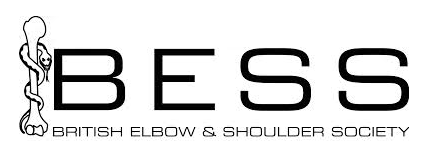Have you ever broken a bone? If the answer is yes, you will know that it hurts – a lot!
If you break a bone in your shoulder, you lose the normal function of your arm. Everyday activities that we take for granted, such as eating, brushing our teeth or getting dressed, can become impossible. You suddenly appreciate how much you take your arms for granted.
One of the first questions patients ask me after breaking a bone is ‘how long will this take to heal?’ The next question is, ‘When can I start using my arm again?’
Naturally, you will want to get back to normal as quickly as possible, but you need to do this safely.
In this article, I will cover:
- The different ways that a shoulder can break
- How a bone heals
- An outline of how these injuries are treated.
What is a broken shoulder?
The term ‘broken shoulder’ refers to a break in one of the bones that make up the shoulder joint. A broken bone is also known as a fracture. In theory, any bone can break at any place, but some bones break more commonly than others. In addition, some common patterns of injury occur more frequently than others.
Why does a bone break?
There are 2 main reasons why a bone can break.
- A strong enough force is applied to the bone, and it breaks.
- There is something wrong with the bone itself, and only a little force is required to break it. Examples of this would be in some inherited bone disorders such as osteogenesis imperfecta or acquired changes in the bone that may occur due to excess alcohol intake.
Are there different ways a bone can break?
You may be surprised to learn that there are several ways that a bone can break. As clinicians, we categorise these to help diagnose and guide treatment for that specific fracture. In general terms, fractures are classified into:
- The number of bits that it has broken into; 2 parts, 3 parts or several parts, which is called comminuted
- The location on the bone where it has broken
- Whether or not the broken fragments have pierced through the skin, this is referred to as a compound fracture
- The amount of damage to the soft tissues that surround the bone, including the nerves, arteries, veins and muscles
How long does it take for a bone to heal?
Fracture healing is complicated. It involves several chemical messengers that orchestrate a complex series of cells to produce the correct proteins and molecules at just the right time to make new bone. It is pretty mind-boggling how many factors are involved in the process, but you can simplify it into four main stages. Ready for the science bit? Read on (or skip)
Stage 1 – Haematoma formation
1-5 days
Haematoma is a fancy word for a blood clot. When a bone breaks, there is bleeding from the bone ends. This blood forms a clot over a few days. The clot varies in size accordingly to how the bone has broken and if any arteries have been ruptured.
Stage 2 – Fibrocartilaginous Stage
Days 5-11
Bone cells invade the clot from the broken ends of the bone and start to make a fibrous matrix. However, fibrocartilage is not as strong as bone. Instead, it has a rubbery, spongy consistency and acts as a ‘sticky scaffold ‘ for new bone to be formed.
Stage 3 – Callus Formation
Days 11 to 28
In this stage, immature bone, called callus, is formed. Callus is weaker than normal bone but strong enough to allow some limited limb movement but no loading or heavy force.
Stage 4 – Bone Remodelling
Day 18 to months/years
The callus is slowly converted to solid normal bone. This can take years, but fortunately, you can start using your arm much earlier.
What types of surgery improve bone healing?
There are different ways to treat fractures. The two factors that influence treatment are:
- Are the bone fracture ends close enough to each other?
- Will the bone fracture ends remain still for six weeks to allow the four stages of fracture healing?
If the bone ends are wide apart, it will be difficult for the bone cells to bridge the gap. In these cases, the fracture ends may need to be manipulated to bring them closer together.
Once the bone ends are together, the muscles that attach to the different parts of the bone could pull them apart again. In this instance, surgery would be required to bring the bone ends together, and metal implants would be used to hold the bone in place.
Sometimes metal pins are used to pierce the skin and pass across the fracture site. This is known as percutaneous pinning and is often done on the wrist. More extensive fractures require stronger fixation with plates held to the bone using screws. This is called open reduction internal fixation, or ORIF. In long bone fractures, such as the femur, a rod can be passed down the middle of the bone canal to align the bones. This is called intramedullary nailing.
What are the common fractures around the shoulder joint?
In the shoulder joint, there are three bones.
- Clavicle or collar bone
- Scapula or shoulder blade
- Humerus or arm bone
Any of these three bones around the shoulder can break. I will describe them individually so you can find the one that is most relevant to you.
Fractures of the collar bone or clavicle
The clavicle is the most commonly broken bone in the shoulder girdle. This is partly because it is the most superficial of the three bones, and it does not have much muscle covering it. In most people, you can easily feel the clavicle along its entire length, from the breastbone or sternum to the shoulder joint itself.
Most fractures happen in the middle of the clavicle. It is often caused by a fall and landing directly onto the shoulder or an outstretched hand. Common injuries that cause this includes rugby tackles. I am seeing many more patients coming to the clinic after falling off cycles and mountain bikes, as the sport has become more popular in the UK over the past few years.
Falling off a horse is the other common injury. If you are a jockey, it is almost part of the job to get a broken collarbone at some stage in your career.
For more information on clavicle fractures, click here on my website.
How should you treat a clavicle fracture?
Fortunately, most midpoint clavicle fractures heal well without surgery. They can be treated by immobilising the arm in a sling to allow the bones to heal. Sometimes a swathe or strap may be used around the waist to hold the sling against your body.
Some clavicle fractures do need surgery. These include:
- If the fracture fragments have overlapped, causing excess shortening of the clavicle.
- If there are several fragments of bone that have dispersed
- Also, If the skin had been cut open by the sharp bone ends
- If there has been any damage to the nerves and blood vessels below the clavicle
Surgery involves placing a metal plate with screws across the clavicle to hold the fracture ends together while the bone heals.
I strongly suggest that you have at least one opinion from a shoulder surgeon to see if your function and recovery would be improved by surgery. The best time to do surgery is within the first 2-3 weeks before the bone has started to heal. After this time, the risks of getting a complication from surgery can increase.
Lateral clavicle fractures
These fractures are located closer to the shoulder joint itself. Some lateral clavicle fractures will disrupt the ligaments that keep the clavicle in close contact with the shoulder blade. If this happens, the clavicle may stick upwards. You will notice a large bump in the skin over the fracture. These fractures usually need surgery to heal correctly.
Contact me to book an appointment, and I will be able to let you know if immobilisation is the best option or if further action is needed.
Ms Susan Alexander is a Consultant Orthopaedic Surgeon and President of the Independent Doctors Federation.
She specialises in all shoulder conditions, including frozen shoulder, rotator cuff tears, dislocations and arthritis. Based in London, she practises at Fortius Clinic and King Edward VII’s Hospital. Ms Alexander is highly experienced in minimally invasive (keyhole) shoulder surgery and is known for her meticulous, patient-centred and holistic approach.
She focuses on accurate diagnosis, bespoke treatment planning, and ongoing support throughout recovery. Learn more about Ms Susan Alexander here.









